Here we explain what to see in Guadalest in one morning, a jewel of the Costa Blanca, in the region of Marina Baixa. It has been declared a Historic-Artistic Site and its official name in Valencian is“El Castell de Guadalest“. In Spanish it would be“Castillo“.
It is a beautiful town in the interior of the province of Alicante and what many people ignore is that it is in 2015 the municipality became part of the “association of The most beautiful villages in Spain“and in 2016 in the “Federation of the Most Beautiful Villages in the World”. It is one of the most visited tourist attractions in the Valencian Community and that is saying a lot. Visiting Guadalest is a great plan even with the family.
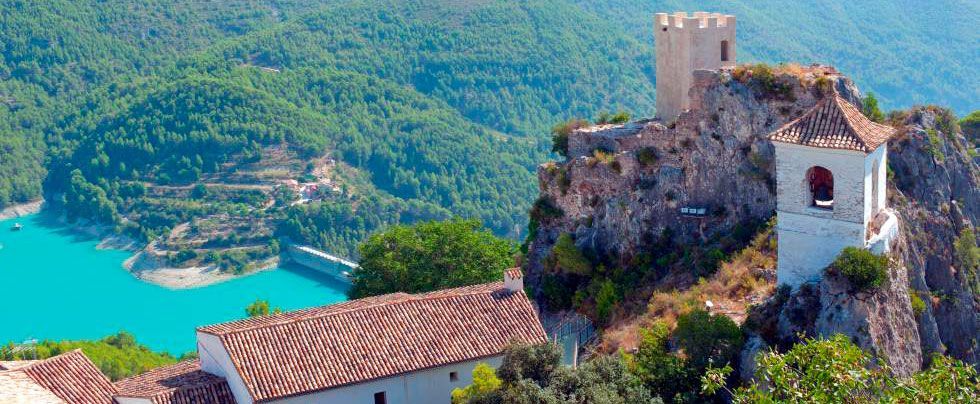
Index
The village and the river that reaches the reservoir, are named after the Guadalest Valley, which includes 6 villages near the Sierra de Aitana. These villages of a few hundred inhabitants are Benimantell (500 inhabitants), Confrides (250 inhabitants), Beniardà (230 inhabitants), El Castell de Guadalest (200 inhabitants), Benifato (124 inhabitants) and Abdet (98 inhabitants). A note, “Beni” means “son of” and comes from the Muslim, which gives us an idea of the history behind this area.
Arrival in town
We will start the visit by saying that it is the perfect place for travelers looking for a getaway. Far from the image of the typical tourist sites, candidate for Rural Wonder 2019 and certified as one of the 59 most beautiful villages in Spain and one of the 400 most beautiful in the World. And you have it here, in Alicante, very close.
We will now explain the highlights by looking at the map of the locality. With photos and maps it is easier to explain what to see in Guadalest.
Map of Guadalest
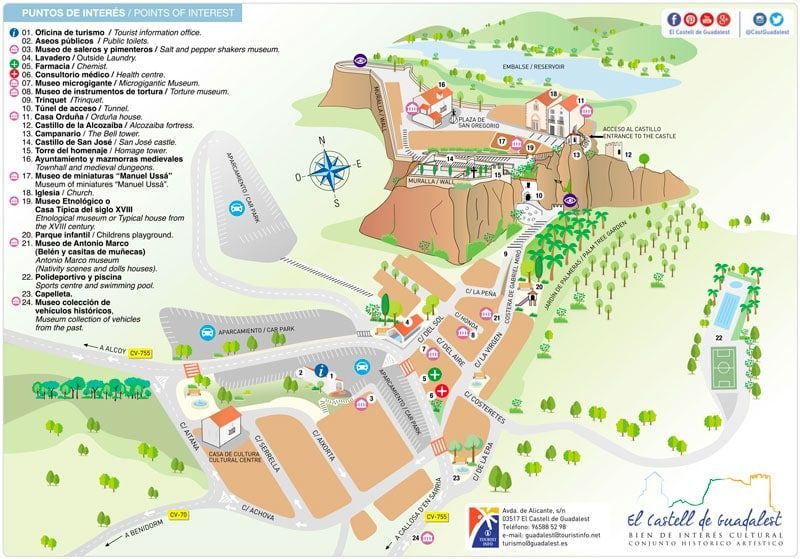
How to climb the Guadalest Castle? Steps with photos
We explain the itinerary of the ascent to the Castillo de San José, step by step and with photos:
We start at the Trinquet
We go up the Costera de Gabriel Miró and we find El Trinquet. We suppose that in its day there was an enclosure to play Pilota Valenciana and hence its name.
If you want to visit the oldest of the Valencian Community you have the Trinquet de l’Abdet, in the Vall de Guadalest and dates from 1772.
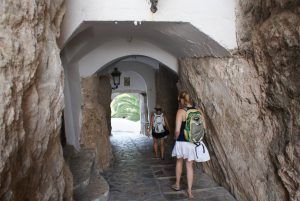
ACCESS TUNNEL
After the short walk uphill we reach the Portal de Sant Josep, dug into the rock itself and is the gateway to the tunnel access to the historic-artistic.
Passing through the tunnel you will feel like you are entering the XVI or XVII century. Just outside you will find the House of the Orduña family.
Visit to the Casa Orduña Municipal Museum
Casa Orduña is a 17th century building, built after the great earthquake of 1644. It stands out for:
- The entrance hall with religious paintings.
- The hall of arches.
- An Ecce-Homo.
- The room of the Virgin of the Assumption.
- The collection of ceramics.
- The library, with more than 1200 books.
- A traveling exhibition hall.
The 2 key dates of the municipality related to this house:
- In 1543 the Marquisate of Guadalest was born for the Cardona family. During this marquisate, the Orduña family, perpetual governors of the Castell since 1669, became important. This family reached the nobility in 1756 and later would reach the presidency of the Diputación de Alicante. His influence was very noticeable.
- In 1708, during the War of Succession, the Castle of San José is partially destroyed and the Orduña House is burned.
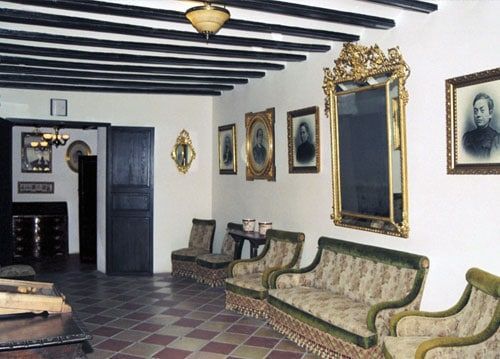
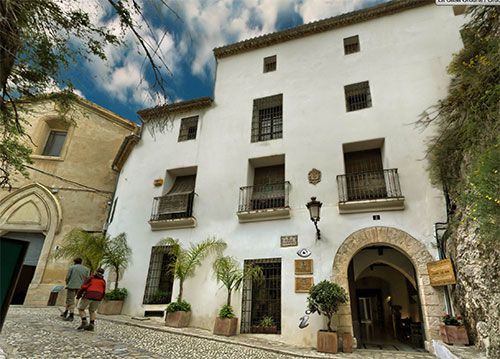
The Alcozaiba
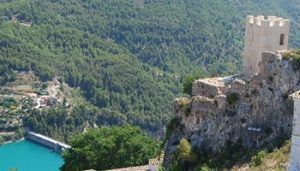
The last remnant of the Muslim fortress in the eleventh century. Currently only one tower remains and it has been restored. It is one of the most iconic images of the province of Alicante, with the reservoir and the Vall de Guadalest. All near the Sierra de Aitana.
El Campanario
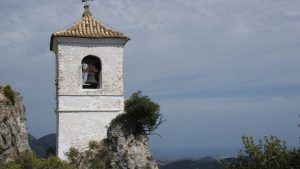
The iconic image of the medieval village. On the rock, on the cliff, rises the bell tower of the Church of the Assumption.
Castle of San José or Castell de Guadalest
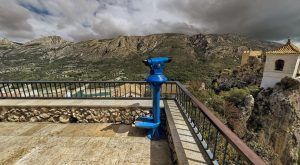
After all these steps we have arrived at the Castell de Guadalest or Castillo de San José. It is the most important thing to see in Guadalest and the most visited. At the top of the village we find the remains, from the time of Pedro IV, which were not destroyed by earthquakes.
It is a Gothic castle from the 11th century and the Parish Church, the Orduña House and the prison stand out in the enclosure.
We will continue with some Medieval History, but very quickly and briefly. The village of Guadalest stands out for its castle from the Muslim period. After the reconquest, it retained a large Muslim population and later King Jaume II gave the town to Bernat d’Ensarrià in 1293, Bernardo for his friends. This lord of the time controlled the entire region, including Callosa (d’Ensarrià), home of the Fuentes del Algar.
We leave you the link to the Virtual Tour of Guadalest.
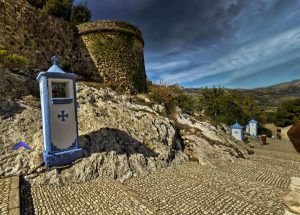
The Way of the Cross
This road leads to the old cemetery.
The Tower of Homage
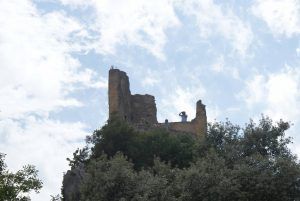
The keep, in any castle, was the most complicated part to conquer. With reinforced walls and higher than the rest of the towers, it was the last bastion of defense. If it was round, it was more resistant to projectiles, but the square ones had more useful space and dependencies.
Medieval Prison and Dungeon
It is ironic that the City Hall was the former prison building of the twelfth century and that in its first floor houses a cistern.
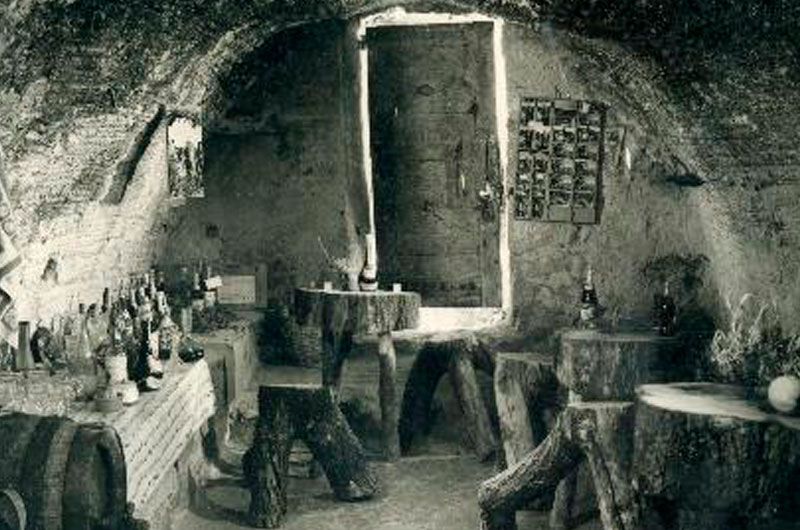
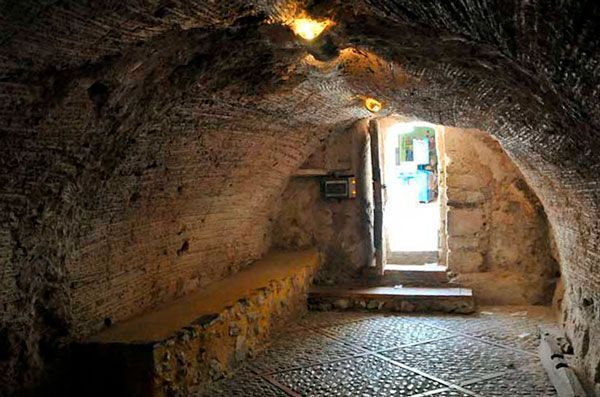
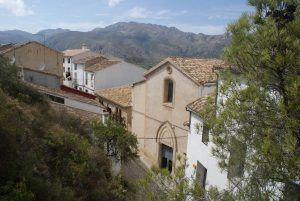
Our Lady of the Assumption Parish Church
Baroque style church from the 18th century, near the Orduña house.
The Town Square and its Streets
Photographs of the old town of Guadalest, of travelers walking through some streets and local businesses. You can have a drink in a bar, buy souvenirs and souvenirs or just stroll around. It’s not all museums and guided tours.
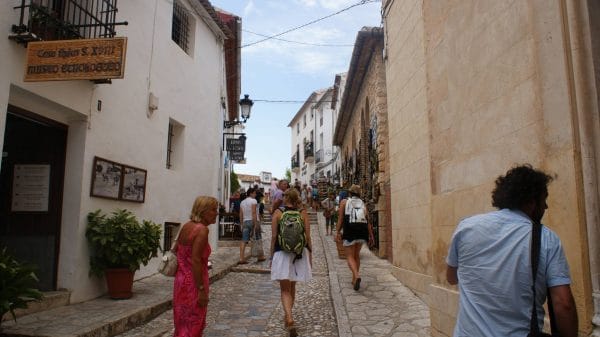
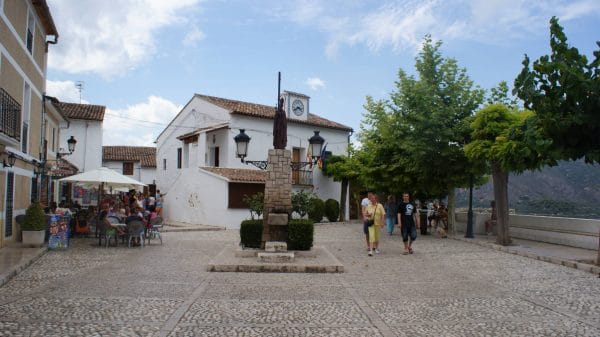
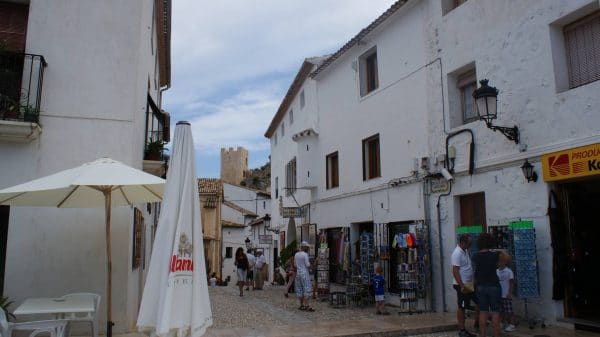
Guadalest: incredible and unique museums in the world.
Here is a list of the best museums to visit in the town:
- The museum of Salt and Pepper Shakers is one of the most picturesque of the whole town. You will find more than 20,000 salt and pepper shakers from all over the world, from the 19th century to the present day.
- The amazing Microgiant Museum. In this museum you can see, among other surprising objects, a bullring built on the head of a pin, the book of the Bible made in a hair, a dressed flea riding a bicycle, a self-portrait carved in a grain of sand or the statue of liberty in the eye of a needle. The artist Manuel Ussá works without breathing, intervening only in the space between heartbeats to control the pulse. We recommend that you look at Groupon.es, as there are often deals on tickets to the Microgiant Museum. Good place to go with children in Guadalest.
- Museum of Torture Instruments.
- Museum of Microminiatures of “MANUEL USSÁ”. Goya’s Fusilamientos del 2 de Mayo, painted on a grain of rice, La Maja Desnuda painted on the wing of a fly and an extensive collection created by the prodigious hands of Manuel Ussá, one of the best microminiaturists in the world. Another good plan to go with children in Guadalest.
- Ethnological museum or typical house of the XVIII century. Museum to explain the way of life of the inhabitants of the village in the past. Nativity Scene and Dolls’ Houses in the
- Antonio Marco Museum. In this museum there are dollhouses, an ecological nativity scene and antique toys. The adult ticket is 4 euros and the child ticket is 2 euros. It is open all year round, except Christmas and New Year’s Day. Here you have the Official Website of the Antonio Marco Museum. If they like dolls your kids, it’s a great place for kids’ fun.
- Museum collection of Historic Vehicles. Collection consisting of about 140 motorcycles and several microcars, in perfect condition and totally original, from the 1920s to the 1970s. The adult ticket is 4 euros, children 3 euros and children under 6 euros free. Open every day except Saturdays. Here you have the Official Website of the Museum Collection of Historic Vehicles.
Guadalest Reservoir
The reservoir or swamp of Guadalest is another of the iconic images from the top of the village of Guadalest. It was built in the 1960s and completed in 1971. The water comes from the Guadalest river, which is a tributary of the Algar river. Yes, you may have heard of the famous Algar springs.
For hiking we recommend the circular route of the reservoir. In addition we find the dam at the end of the reservoir, for the supply and irrigation of the entire area of the Marina Baixa region. If you want to visit the interior of the province of Alicante you can not miss these views. Believe us when we tell you that it is one of the best places in the interior of Alicante for hiking, with spectacular views. If you have restless feet, you know.
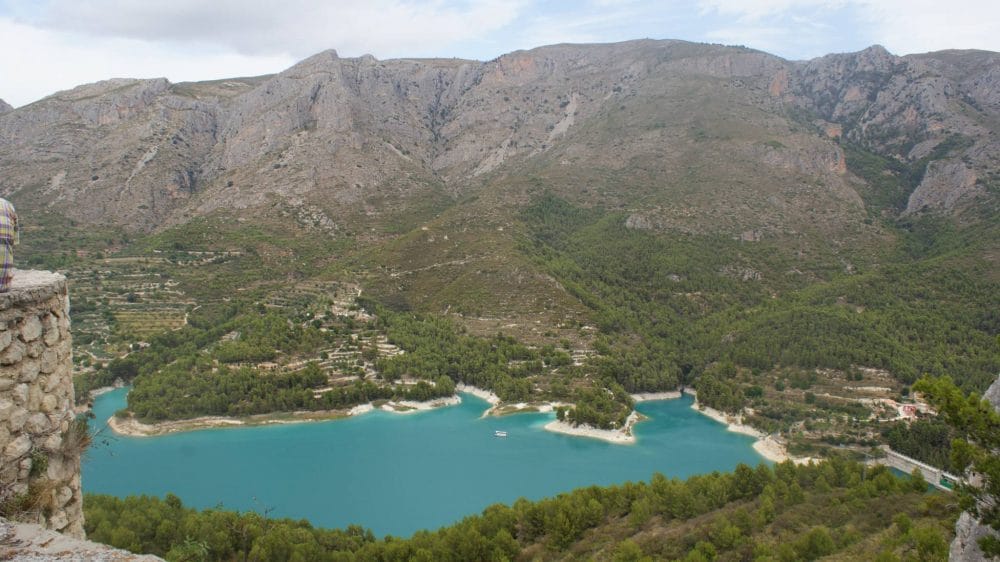
If you go fishing you should go along the south shore, the only access by car.
Frequently asked questions about Guadalest
WHAT EVENTS ARE THERE?
- Guadalest Patron Saint Festivities: mid-August, around the 14th.
- Romantic Night: simultaneous event in the 59 most beautiful villages in Spain and 400 in Europe. With dinner and music in the square. About June 22.
- Festivities of San Gregorio (Festes de Sant Gregori): at the beginning of May.
WHAT TO EAT IN GUADALEST?
We always recommend the traditional cuisine of the area. If you are going to eat in Guadalest, you have to eat rabbit with all i oli, stuffed peppers, baked vegetables and L’Olleta de Blat.
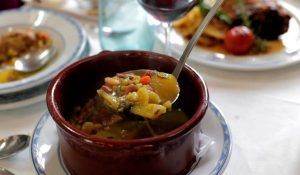
You can go to Tripadvisor and see the opinions of people who have eaten there. As always, opinions should be carefully assessed and not taken at face value when choosing places to eat, hotels or even campsites.
Where to Sleep: Hotel in Guadalest? Rural houses?
Near the town you will only find a reduced list of hotels in Guadalest and rural houses. But before choosing a hotel for your visit, consider what you are going to do nearby. If your intention is to spend a few days in the valley away from civilization or if you want to be near the sea and with more hotel options. You can always take the car and in little more than 20 minutes you will be at the Castle.
Camping nearby
If you are looking for camping type accommodation nearby you know, camping Armanello in Benidorm. From our campsite it will take you less than 30 minutes (although Googlemaps says 30) to get to the village. With us you can camp, you have plots for caravan and motorhome, bungalows and other accommodations. If you come during Easter or summer you will find entertainment for children.
As expected, we encourage you not to sleep in Guadalest, but in a campsite with bungalows and enjoy the valley for a day, with ascent and descent to the mountain. Both our campsite and the locality have excellent ratings on Tripadvisor and may be one of the best combinations of accommodation and activity that exist in Alicante.
What are the visiting hours of the Castell de Guadalest?
The visiting hours of the Guadalest Castle are from Monday to Sunday from 10:00h to 20:00h, except New Year’s Eve.
How much does it cost to enter the castle of Guadalest?
It is accessed through the entrance to the Orduña House. The entrance fee to the museum and castle is 4 euros.
Where to eat in Guadalest?
A list of the best restaurants according to customer reviews:
Xorta. Restaurant with spectacular views of the valley and the sea. Home cooking, with menu of the day and open from Tuesday to Sunday from 12 to 16h. If you go on Sunday, please call for reservations at 965 885 187.
Restaurant La Plaça. Views of the swamp and the nearby mountains. L’Hort. Privileged views with typical food such as Olleta de Blat, putxero de pilotes, mintxos and lamb. They are open from 10 am to 6 pm and reservations are not usually necessary.
Nou Salat. Restaurant that picks up the baton of the old Venta El Salat. Traditional and market cuisine. In winter they are only open from 10am to 4pm and in summer they are open from 8pm to 11pm.
The Riu. Restaurant specialized in grilled meats. Winner of the Tripadvisor Certificate of Excellence in 2015 based on traveler reviews.
Mora Restaurant. Different food in a very cozy place. It does not serve traditional food like the rest of the restaurants in the area. Dishes such as savory waffles. A different experience.
Where to bathe in the Guadalest reservoir?
The best place to swim in the Guadalest reservoir is near Beniardá. Therefore, it is best to go there and follow the signs to reach the “reservoir beach”. Never let the children out of your sight.
How many Km are there from Benidorm to Guadalest?
The distance in straight line between Benidorm and Guadalest is 16 km and 21.5 km by road.
How do I get to Guadalest from Benidorm?
Between Benidorm and Guadalest there are 16.49 km distance in a straight line and 22 km by car. There are 3 ways to get from Benidorm to Guadalest: by bus, cab or car.
– Line 016 Bus “LlorenteBus” – 31 min. Take bus line 016 from Av. Beniardá 16 to El Castell de Guadalest 016. 1€ – 4€.
– Cab – 24 min Take a cab from “BeniYork” to Guadalest 21.5 km. 27€ – 32€.
– Car – 24 min.
How do I get to Guadalest from Alicante?
There are 3 ways to get from Alicante to Guadalest:
– TRAM Alicante + Line 016 Bus “LlorenteBus” – 2,30h min. Take the TRAM Alicante to Benidorm and then take bus line 016 from Av. Beniardá 16 to El Castell de Guadalest 016. 5€ – 9€
– Cab – 51 min Take a cab from Alicante to Guadalest 60 km. 100€.
– Car – 50 min
Where to park in Guadalest?
This is one of the most valuable pieces of advice. You will have to park in Guadalest, full of tourists, and for this you will find several municipal parking lots at the entrance. You pay 2 euros for the whole day (the price may vary) and park near the Tourist Office.
How to get to Guadalest from Alicante

